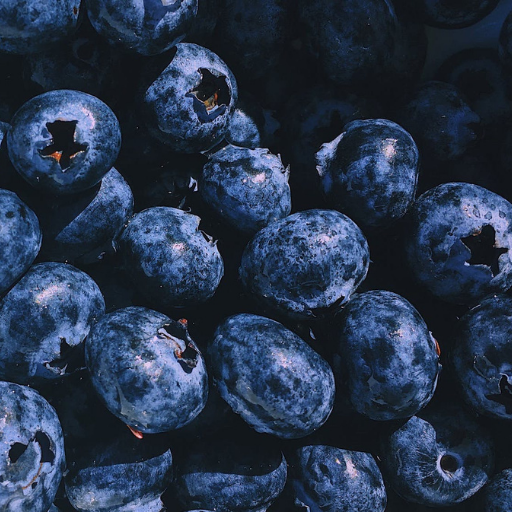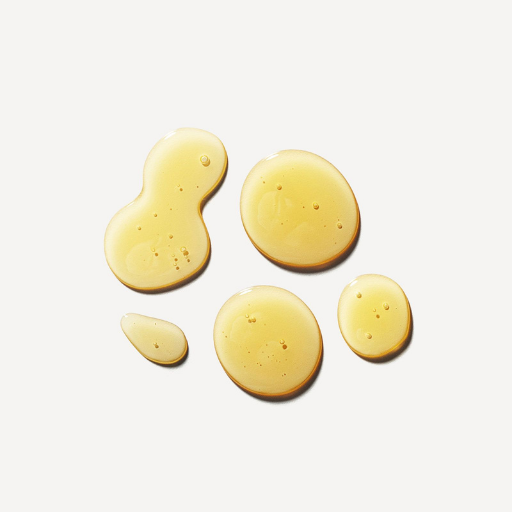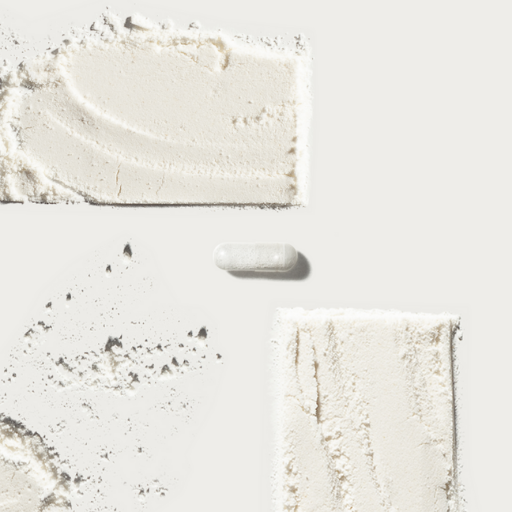7 of the best heart-healthy foods to include in your diet


7 of the best heart-healthy foods to include in your diet
Heart disease is one of Australia’s biggest health problems. It’s the single leading cause of death, killing one Australian every 12 minutes (1).

Heart-healthy foods contain properties that are shown to benefit our health and wellbeing. Whole foods can help to reduce blood pressure, triglycerides and blood cholesterol levels, and assist to reduce the risk of developing heart disease.
7 heart-healthy foods
If you want to keep your heart as healthy as it can be, these are our top 7 heart-healthy foods.
1) Leafy green vegetables
Leafy green vegetables include kale, broccoli and cabbage. These contain an abundance of beneficial nutrients that are protective for heart health (2).
The nitrates found in these vegetables can increase nitric oxide levels in the body (2). Nitric oxide allows blood vessels to increase in size and muscles to relax.4 It also increases blood flow through the body (4). This can help to lower blood pressure.
Dark leafy green vegetables such as spinach and rocket are also a good source of vitamin K. Vitamin K helps blood clotting and protects the arteries (5).
Top tips:
- Add kale, spinach or rocket in a salad.
- Steam broccoli and include it as a side with your meals.
- Use cabbage in a stir-fry or add sauerkraut to meals.
2) Beans, legumes and pulses
Chickpeas, lentils, and black beans are all classified as legumes and pulses. These plant proteins are high in fibre and packed with protein and antioxidants and can contribute to a healthy whole food diet.
Legumes are top heart healthy food. Studies show they can help reduce risk factors for cardiovascular and other chronic diseases (6,7). This is especially beneficial when increasing legumes in the diet and reducing red meat consumption.
The fibre legumes contain has been shown to reduce total and LDL cholesterol (LDL is the ‘bad’ cholesterol) (8,9). Having high cholesterol levels in the blood is a major risk factor for heart disease.
Top tips:
- Try hummus and carrot sticks as a snack.
- Add lentils to soups, stews and salads.
- Try new recipes like chili non-carne and include a 5 bean mix.
3) Rolled oats
Rolled oats contain a type of soluble fibre known as beta-glucan. Beta-glucan is unique in its ability to lower blood cholesterol levels (10). It does this by reducing the amount of cholesterol absorbed from the digestive tract (11).
Top tips:
- Have rolled oats as porridge for breakfast.
- Add rolled oats to a smoothie.
- Make healthy energy balls or muesli bars as a mid-morning snack.
4) Blueberries
Blueberries contain one of the highest amounts of antioxidants of most fruits and vegetables. Antioxidants help to protect the body from dangerous cells known as free radicals. These unstable cells can damage healthy cells and may contribute to ageing and disease states.
These antioxidants in blueberries are shown to reduce “bad” LDL cholesterol. This is an important step in the process of cardiovascular disease (12).
A new study has also found that eating 150g of blueberries each day could reduce the risk of heart disease by up to 15% (13).
Top tips:
- Top your breakfast cereal with fresh berries.
- Blend frozen berries into a smoothie.
- Enjoy a fruit salad including berries as a snack.

5) Dark chocolate
Dark chocolate is packed full of powerful antioxidants. If you’re a chocolate lover, this is good news for you. One study in Norfolk, England followed almost 21,000 residents for 11 years. It found that those with a higher chocolate intake had a lower risk of heart disease (14).
Eating chocolate has also been linked with other heart-protective benefits. This includes reducing blood pressure, increasing “good” HDL cholesterol levels and lowering “bad” LDL cholesterol (15,16).
Dark chocolate is also a rich source of magnesium, with 16% of the recommended daily intake in a 30g serving.
Having a high magnesium intake in the diet has been linked with a lower risk of diabetes and high blood pressure (17). High blood magnesium levels has also been linked with a reduced risk of heart disease (17).
Top tips:
- Enjoy dark chocolate and blueberries as an after-dinner snack.
- Swap your milk chocolate for dark chocolate above 70%.
6) Red wine
The link between red wine and heart health has long been debated (18). Despite this, some studies indicate that wine may have benefits for cardiovascular health.
Red wine is a rich source of a type of antioxidants known as polyphenols. Grapes, especially red grapes, have high levels of polyphenols (19,20). These antioxidants have been shown to reduce inflammation and oxidative stress (where unstable molecules damage your cells) (21).
Studies show that people who drink red wine in moderate amounts have lower rates of heart disease (22). This antioxidant-packed beverage may also help to reduce blood pressure in people with high blood pressure, which may reduce the risk of heart disease (23).

7) Fatty fish
There are several types of fats that are found in foods that can affect heart disease risk. Saturated fat is primarily found in animal-based foods like full-fat dairy and red meat. It has been linked with increasing LDL “bad” cholesterol and risk of heart disease.
Conversely, polyunsaturated and monounsaturated fats found in fatty fish and avocado or olive oil are highly beneficial in lowering “bad” cholesterol and increasing “good” cholesterol levels (24).
Unlike other animal proteins, fatty fish is very low in saturated fat and is rich in omega-3 long-chain polyunsaturated fats. Fatty fish include salmon, herring, sardines and blue mackerel. They are also a rich source of other beneficial nutrients including selenium, zinc, iodine, vitamin A, and D.
Australians are recommended to be eating 2 -3 serves of fish per week (25). Research indicates that this intake of fish and omega-3 fatty acids is associated with preventing heart disease (25,26,27). There are also some studies indicating that fish and omega-3 supplementation is beneficial in treating heart failure (25).
To ensure you are eating enough omega-3, it may be worthwhile to consider our Vitable omega-3 fish oil supplement.

Top tips:
- Have grilled salmon or a serve of fatty fish and vegetables for dinner 2 - 3 times a week.
- Enjoy tinned salmon or tuna on a sandwich or in a salad.
- Have sardines on crackers as a snack.
Wrap up
The research linking cardiovascular disease and diet grows stronger each day. The foods that you eat have a huge effect on your blood pressure, cholesterol and triglycerides levels. All these factors have an impact on your overall heart health.
Eating heart-healthy foods is a great way to keep your heart functioning at its best. To help maximise your diet, consider the Vitable supplement range including Vitable’s Fish Oil, Magnesium and Acetyl L-Carnitine.

Find out more about other areas that the above supplements can help you with:
Fish Oil | Magnesium | Acetyl L-Carnitine
*Always read the label. Follow the directions for use. If symptoms persist, talk to your health professional. Vitamin and/or mineral supplements should not replace a balanced diet.
References
- The Heart Foundation. (2019). Heart disease in Australia. The Heart Foundation. Published on: https://www.heartfoundation.org.au/about-us/what-we-do/heart-disease-in-australia.
- Blekkenhorst, L., Sim, M., Bondonno, C., Bondonno, N., Ward, N., Prince, R., Devine, A., Lewis, J. and Hodgson, J. (2018). Cardiovascular Health Benefits of Specific Vegetable Types: A Narrative Review. Nutrients, 10(5), p.595.
- Napoli, C. and Ignarro, L. (2009). Nitric oxide and pathogenic mechanisms involved in the development of vascular diseases. Archives of Pharmacal Research, 32(8), pp.1103-1108.
- Lidder, S. and Webb, A. (2013). Vascular effects of dietary nitrate (as found in green leafy vegetables and beetroot) via the nitrate-nitrite-nitric oxide pathway. British Journal of Clinical Pharmacology, 75(3), pp.677-696.
- Vermeer, C. (2012). Vitamin K: the effect on health beyond coagulation – an overview. Food & Nutrition Research, 56(1), p.5329.
- Bazzano, L., Thompson, A., Tees, M., Nguyen, C. and Winham, D. (2011). Non-soy legume consumption lowers cholesterol levels: A meta-analysis of randomized controlled trials. Nutrition, Metabolism and Cardiovascular Diseases, 21(2), pp.94-103.
- Jukanti, A., Gaur, P., Gowda, C. and Chibbar, R. (2012). Nutritional quality and health benefits of chickpea (Cicer arietinumL.): a review. British Journal of Nutrition, 108(S1), pp.S11-S26.
- Pittaway, J., Ahuja, K., Cehun, M., Chronopoulos, A., Robertson, I., Nestel, P. and Ball, M. (2006). Dietary Supplementation with Chickpeas for at Least 5 Weeks Results in Small but Significant Reductions in Serum Total and Low-Density Lipoprotein Cholesterols in Adult Women and Men. Annals of Nutrition and Metabolism, 50(6), pp.512-518.
- Pittaway, J., Ahuja, K., Robertson, I. and Ball, M. (2007). Effects of a Controlled Diet Supplemented with Chickpeas on Serum Lipids, Glucose Tolerance, Satiety and Bowel Function. Journal of the American College of Nutrition, 26(4), pp.334-340.
- Sima, P., Vannucci, L. and Vetvicka, V. (2018). β-glucans and cholesterol (Review). International Journal of Molecular Medicine.
- Othman, R., Moghadasian, M. and Jones, P. (2011). Cholesterol-lowering effects of oat β-glucan. Nutrition Reviews, 69(6), pp.299-309.
- Khurana, S., Venkataraman, K., Hollingsworth, A., Piche, M. and Tai, T. (2013). Polyphenols: Benefits to the Cardiovascular System in Health and in Aging. Nutrients, 5(10), pp.3779-3827.
- Curtis, P., van der Velpen, V., Berends, L., Jennings, A., Feelisch, M., Umpleby, A., Evans, M., Fernandez, B., Meiss, M., Minnion, M., Potter, J., Minihane, A., Kay, C., Rimm, E. and Cassidy, A. (2019). Blueberries improve biomarkers of cardiometabolic function in participants with metabolic syndrome—results from a 6-month, double-blind, randomized controlled trial. The American Journal of Clinical Nutrition, 109(6), pp.1535-1545.
- Kwok, C., Boekholdt, S., Lentjes, M., Loke, Y., Luben, R., Yeong, J., Wareham, N., Myint, P. and Khaw, K. (2015). Habitual chocolate consumption and risk of cardiovascular disease among healthy men and women. Heart, 101(16), pp.1279-1287.
- Baba, S., Natsume, M., Yasuda, A., Nakamura, Y., Tamura, T., Osakabe, N., Kanegae, M. and Kondo, K. (2007). Plasma LDL and HDL Cholesterol and Oxidized LDL Concentrations Are Altered in Normo- and Hypercholesterolemic Humans after Intake of Different Levels of Cocoa Powder. The Journal of Nutrition, 137(6), pp.1436-1441.
- Taubert, D., Roesen, R., Lehmann, C., Jung, N. and Schömig, E. (2007). Effects of Low Habitual Cocoa Intake on Blood Pressure and Bioactive Nitric Oxide. JAMA, 298(1), p.49.
- Rosique-Esteban, N., Guasch-Ferré, M., Hernández-Alonso, P. and Salas-Salvadó, J. (2018). Dietary Magnesium and Cardiovascular Disease: A Review with Emphasis in Epidemiological Studies. Nutrients, 10(2), p.168.
- Haseeb, S., Alexander, B. and Baranchuk, A. (2017). Wine and Cardiovascular Health. Circulation, 136(15), pp.1434-1448.
- Copetti, C., Franco, F., Machado, E., Soquetta, M., Quatrin, A., Ramos, V., Moreira, J., Emanuelli, T., Sautter, C. and Penna, N. (2018). Acute Consumption of Bordo Grape Juice and Wine Improves Serum Antioxidant Status in Healthy Individuals and Inhibits Reactive Oxygen Species Production in Human Neuron-Like Cells. Journal of Nutrition and Metabolism, 2018, pp.1-11.
- Jäntschi, L., Sestraş, R. and Bolboacă, S. (2013). Modeling the Antioxidant Capacity of Red Wine from Different Production Years and Sources under Censoring. Computational and Mathematical Methods in Medicine, 2013, pp.1-7.
- IMHOF, A., WOODWARD, M., DOERING, A., HELBECQUE, N., LOEWEL, H., AMOUYEL, P., LOWE, G. and KOENIG, W. (2004). Overall alcohol intake, beer, wine, and systemic markers of inflammation in western Europe: results from three MONICA samples (Augsburg, Glasgow, Lille). European Heart Journal, 25(23), pp.2092-2100.
- Adjemian, M., Volpe, R. and Adjemian, J. (2015). Relationships between Diet, Alcohol Preference, and Heart Disease and Type 2 Diabetes among Americans. PLOS ONE, 10(5), p.e0124351.
- Andrade, A., Cesena, F., Consolim-Colombo, F., Coimbra, S., Benjó, A., Krieger, E. and Luz, P. (2009). Short-term red wine consumption promotes differential effects on plasma levels of high-density lipoprotein cholesterol, sympathetic activity, and endothelial function in hypercholesterolemic, hypertensive, and healthy subjects. Clinics, 64(5).
- Nocella, C., Cammisotto, V., Fianchini, L., D'Amico, A., Novo, M., Castellani, V., Stefanini, L., Violi, F. and Carnevale, R. (2017). Extra Virgin Olive Oil and Cardiovascular Diseases: Benefits for Human Health. Endocrine, Metabolic & Immune Disorders - Drug Targets, 18(1).
- Heart Foundation. (2019). Healthy Hearts Position Statement: Fish and Seafood. Published on: https://www.heartfoundation.org.au/images/uploads/main/Programs/PRO-169_Fish_and_seafood_position_statement.pdf
- de Goede, J., Geleijnse, J., Boer, J., Kromhout, D. and Verschuren, W. (2010). Marine (n-3) Fatty Acids, Fish Consumption, and the 10-Year Risk of Fatal and Nonfatal Coronary Heart Disease in a Large Population of Dutch Adults with Low Fish Intake. The Journal of Nutrition, 140(5), pp.1023-1028.
- Streppel, M., Ocke, M., Boshuizen, H., Kok, F. and Kromhout, D. (2008). Long-term fish consumption and n-3 fatty acid intake in relation to (sudden) coronary heart disease death: the Zutphen study. European Heart Journal, 29(16), pp.2024-2030.
